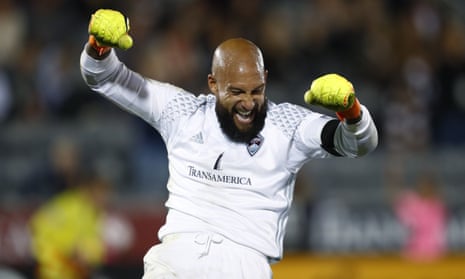Do US soccer leagues need their own Super Bowl, a week-long festival of the sport at a neutral site? Or should they reward the best regular-season team with home-field advantage for the final game?
Why not both?
US leagues have long mimicked the big fish in the American pro sports pond, the NFL, by holding play-offs concluding with a neutral-site final. The NASL of the 1970s and 1980s even imitated the NFL’s name, putting Pele, Franz Beckenbauer, Rodney Marsh and company in the “Soccer Bowl”.
MLS changed that in 2012, moving the final to the home field of the highest remaining seed. The relaunched NASL also plays the new Soccer Bowl (technically the name for the trophy and not the game, as of 2014) at a home field. The NWSL has gone the other direction, playing the last two finals at a neutral site.
The neutral site has plenty of advantages. A league can plan out several days of festivities and meetings, bringing supporters, players, sponsors and executives together in one place without scrambling for last-minute plane tickets and hotel accommodations. Neutral-site MLS Cups had a colorful convention atmosphere through the weekend, with events everywhere from swanky clubs to hotel conference rooms. Even in the NWSL, with its more modest resources, fans and reporters converged on Houston this month to see a thrilling final and chat about the sport.
Purists, though, want to reward regular-season performance. If home-field advantage is on the line, those last few games in October will mean much more. It’s especially rewarding for supporters, who can see their club compete for a championship without traveling. Clubs with a strong base of season-ticket holders will have no trouble filling their home grounds, even on short notice.
If only soccer had some long-standing way of setting knockout competitions with two games rather than one. Perhaps we could call it a “two-leg aggregate series”. Oh, right. Soccer does indeed use such a format, in all sorts of competitions all over the world. But in this case, leagues can give it a twist.
The two-leg format is meant to minimize home-field advantage, making each team play on each other’s home ground, whether it’s Barnsley v Fleetwood Town in the Football League Trophy semi-finals or Jordan battling Uruguay for a spot in the World Cup.
To give the higher seed an advantage, give that team the first game of a two-leg final. The club gets a hot-selling home game, and the players get all the other advantages of playing on familiar turf. But instead of giving the second leg to the other finalist, hold that at a neutral site.
The lower-seeded finalist may disagree, but the format is a win-win. The league can advertise the time and place for its biggest game months in advance, plotting out events for sponsors and supporters to enjoy. And yet the higher-seeded team gets a just reward for winning that last game in October.
Other US sports don’t need to tinker with their play-offs. In the NFL, the conference champions play few teams in common through the unbalanced regular season, and there’s no reason to give one team a home-field advantage. The seven-game series in baseball, basketball and hockey are perfectly fair – though baseball could and should drop the insistence that the league that wins the All-Star Game, where the prime directive is to avoid wearing out pitchers’ arms, gets the home-field edge in the World Series. They also have other occasions – the All-Star Game, the draft – for which the league can plan several days of festivities.
Soccer is different. MLS has an All-Star Game, but it often shares the stage in soccer’s cluttered summer months with a World Cup or other international tournaments. MLS and the NWSL hold their drafts at the NSCAA (national soccer coaches) convention, a good meeting point for people in the soccer business but largely inaccessible to the general public.
And MLS has the perfect stadium situation for a mixed two-leg series. Most clubs today play in smaller stadiums whose schedule they control. These grounds are perfect for the first leg of a final series. The second leg can be held in a larger venue.
Spreading out the final also gives fans more time to make travel plans to that second leg. The game’s crowd can have more fans of the specific teams, not just neutral fans who love the sport or the event.
And the two-leg series will give everyone plenty of talking points for the second leg. What adjustments will each team make? If the top seed won the first leg, can their opponents bounce back? If the lower seed held the top seed in the first leg, will that stop the top seed’s momentum?
Maybe the media, still focused on the traditional “Big Four” sports, will take notice for a change.

Comments (…)
Sign in or create your Guardian account to join the discussion